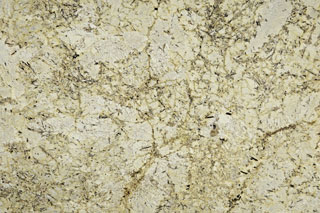Granite: A Strong History for a Strong Counter

Granite comes from the Latin word "granum”, or grain which references the grainy appearance of the crystalline rock pattern in the stone. It is found in the Earth's crust and is formed by magma. The rock is usually either reddish-pink or grey in hue and is the second in strength to marble for use on floors and countertops in home décor.
In ancient use, granite was used in creating the Red Pyramid of Egypt, which got its name from the red hues of granite exposed on the surface of the pyramid, while the Black Pyramid's capstone was made of a black granite and is one of the only remaining pieces of the mainly ruined structure.
In other ancient structures, Hindu temples were made of granite as were details carved into the temples such as life sized elephants. More durable than the luxurious marble stone, granite is now mainly used in modern architecture. Polished granite is widely used for countertops and floors due to its finish and strength. As levels of acid rain developed in parts of the world, architects turned to granite as an alternate to marble.
The Different Colours and Benefits of Granite
Granite has been used in external and internal architectural applications including bridges, monuments, paving, countertops for the bath and kitchen, columns, and other design elements. Unlike its design competitor marble, granite is formed in a limited array of colours and patterns. While marble swirls in design, granite has a more granular appearance and ranges through black, grey, white, pink, green, blue, brown and red. One colour is not stronger than the other, and the malleability of the stone is not affected by the colour, a benefit to choosing granite over marble for design needs.
Granite is purchased for countertops specifically in slabs or in tiles – the most popular choice for the counter top is of course the slab. It is more affordable than marble, but like marble, granite does not scratch easily and is very strong.
Other benefits of using granite for your bath or kitchen countertop include:
-
Granite is rated second only to diamonds for hardness among stones and minerals. Granite can be cut on and hot pots and pans can be rested on it without a heat guard making it a great surface in the kitchen.
-
Stain and Scratch Resistant – great for bathroom and kitchen use. The finish on granite is actually polished with diamonds to give a glossy finish which allows the crystals to shine and sparkle. Every day use will not scratch or stain the surface of a granite countertop.
-
Unique Colours and Patterns – no two slabs are the same, creating a unique and stylish finish to your kitchen or bathroom décor.
Maintaining Granite's Diamond Finish
A counter of granite is very easy to maintain and care for. It rarely stains as granite is the least porous of the stones used in home counters and floors. Maintaining the seal on the counter top will prevent spilled acidic liquids such as vinegar or cleaning solutions with ammonia from damaging the granite long-term. Simply clean granite countertops with soap and water – it's that easy!